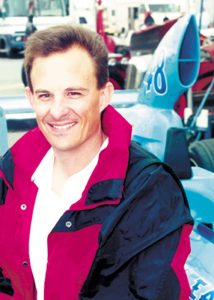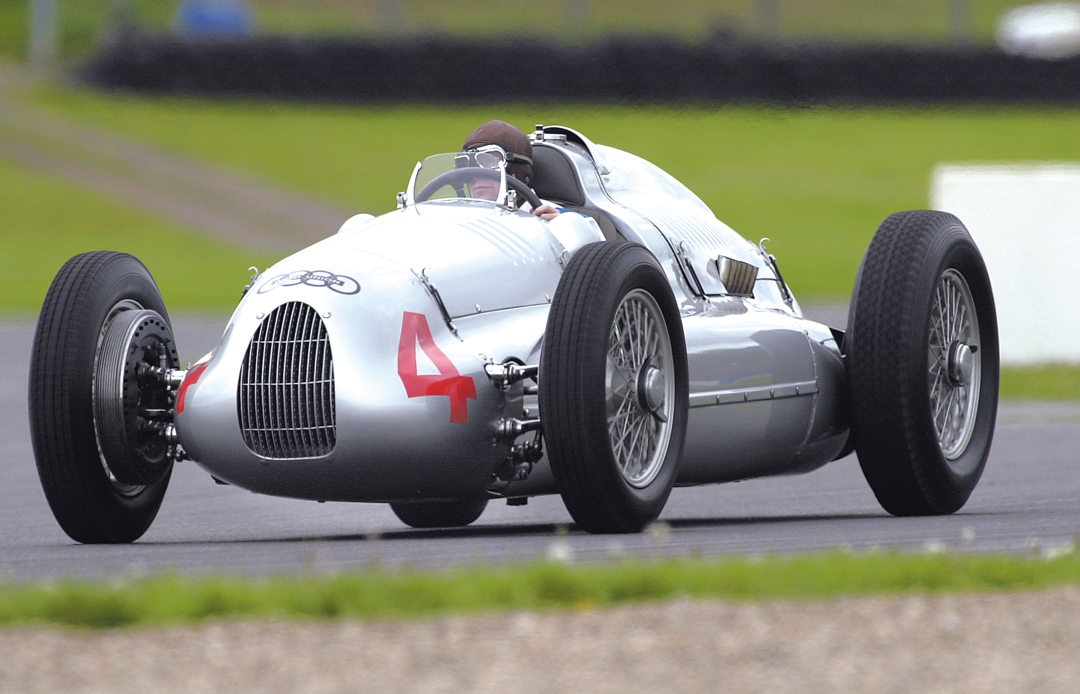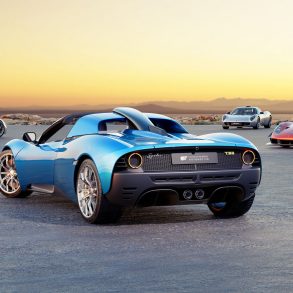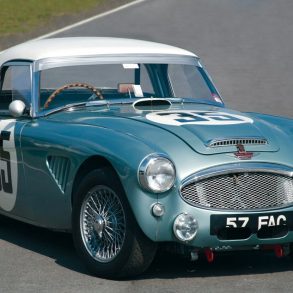As I sit down to write this month’s column, Halloween quickly approaches. The stores are jammed to the gunnels with such traditional Halloween fare as inflatable, motorized lawn ghouls, 300 metric tons of extra-hyperactivity-inducing candy, and of course costumes. Yes, the streets are starting to look a bit scary with all manner of demons and ghosts roaming about. All this scary fare has got me to thinking about some of the ghosts and demons that frighten us in the vintage racing community.
Of all the historic bogeymen, that we as historic racers have collectively buried our heads under the covers and refused to acknowledge, perhaps none is more intimidating as the dreaded Doppelganger. For those less familiar with the supernatural lexicon, Webster’s dictionary defines the Doppelganger as “the ghostly double or wraith of a living person”—in essence, an entity that looks exactly like someone, but isn’t.
Historic racing has struggled with its own “Doppelgangers” for decades, though our lingo tends to refer to them by such names as “reproduction,” “recreation” or, less affectionately, “air car.” While the names seem less intimidating, their presence still seems to strike blood-curdling fear into the hearts of many of our brethren. However, like other fears of the unknown, could familiarity be breeding acceptance?

Editor
In the ’80s and ’90s, having a recreation or “air car”—a racecar which never existed in period—literally made one a racing pariah. I can recall many a trackside meeting when a Cobra, Kurtis or a Can-Am car was revealed to be a “fake.”
Oftentimes, the villagers would gather around the Chief Steward, pitchforks in hand, “What should we do with them, throw them out of the race?” “Naw, burn them at the stake!!”
In fact, the problem with recreation McLaren Can-Am cars got so bad at one point that it spawned the now-famous line that a race was so good it had “12 of the original 8 McLaren M8Fs competing.”
Eventually, by the turn of the century, the furor and the witch-hunt over these air cars seemed to die down some. Did the cars in question go away or did people just get tired of being upset? Perhaps not coincidentally, it was about this same period in time that some very important cars started to surface that blurred the lines between what is considered original and what is a recreation.
Audi, seeking to better capitalize on its racing heritage, commissioned noted British restorers Crosthwaite and Gardiner to “recreate” six significant Auto Unions, essentially from scratch, but build them to exact standards as laid down in the original drawings. When these cars surfaced, everyone wanted to see them run, so they were instantly invited to such prestigious events as the Goodwood Festival and the Monterey Historics.

So how does one resolve the dichotomy of certain recreated cars being shunned, while others are whole heartedly embraced? Is there any tangible difference between a 427 Cobra that is built to exact original specification and a Lancia D-50 recreation? Ironically, the answer at some level is probably, yes. Since there are still quite a few original 427s that are around and active on the scene, people would obviously rather see the originals run, rather than a recreation. However, in the case of the Auto Unions and the Lancias (and several other recently recreated rare cars) there may be no examples remaining or only one car tucked away in a factory museum that will never see the light of day. In these cases, if the choice is never getting to hear the scream of an original factory D-50, or seeing a recreation run, I think most everyone would agree that they’d welcome seeing it run.
Another interesting twist to this phenomenon can be found in this month’s feature article, where our man in Australia, Patrick Quinn, reveals the growing trend of scratch-built prewar racecars, assembled from assorted period components. Could this new trend be coming to a racetrack near you?
What I find intriguing about all of this renewed interest in recreations is the fact that more manufacturers and constructors are also getting into the act. Recently, Jim Hall revealed that he will build a very limited production of Chaparral 2Es—exact recreations of the famed Can-Am car—but cars that never existed in period. And while I can’t let the cat out of the bag just yet, I can tell you that at least two other very famous racecar constructors will soon be announcing recreations of several of their most famous racecars. Will an influx of exotic recreations breakdown our collective fears of automotive Doppelgangers? Good, bad or indifferent I think that this is a trend that we will be hearing a lot more about in the coming years. I’d love to hear your thoughts.











Es un tema polémico, creo que deberían agruparse en una nueva categoría bajo responsabilidad de autenticidad de los fabricantes originales.
Si, es verdad. Una nueva categoría es un idea mas fina. Yo escribo este articulo en 14 anos pasado…hay mucho cambio!
Me parece lo más correcto, gracias Casey